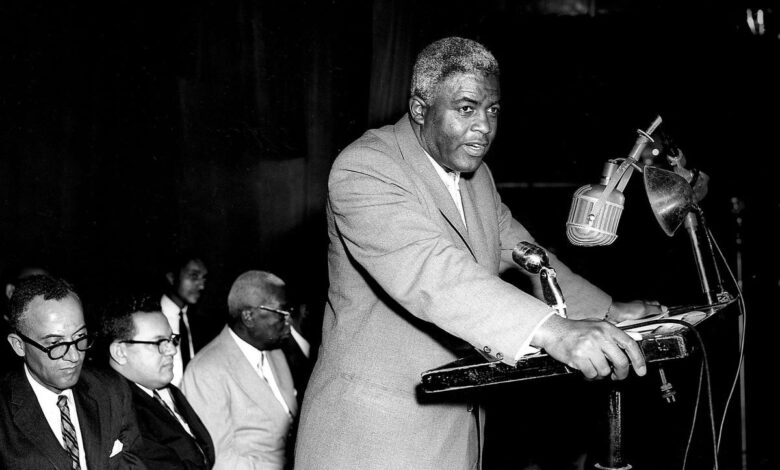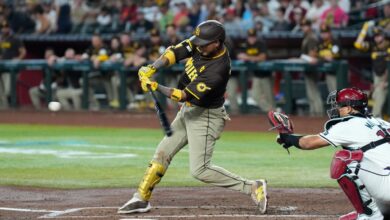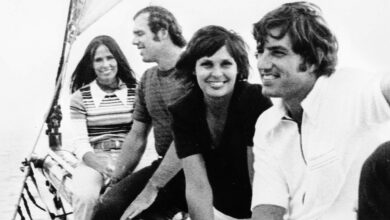
The 2024 World Series featuring the Los Angeles Dodgers and New York Yankees is the 12th Fall Classic to showcase the two storied franchises. It calls to mind the many great moments that have taken place in those 11 other World Series. Let’s look back at one of those moments, the 1955 World Series when the Dodgers were in Brooklyn.
Bums no more: Revisiting the Dodgers’ 1955 World Series championship
Previously, the Yankees had won the World Series each time the two teams met – in 1942, 1947, 1949, 1952, and 1953. The Yankees were the mighty Yankees, Murderer’s Row, the Bronx Bombers. The Brooklyn Dodgers were the classic successful/tragic team, affectionately known as “the Bums” to the denizens of Brooklyn.
It was a time when New York, which also had the Giants, ruled baseball. From 1949-56, there were only four World Series games that weren’t played in New York. The last two times the Dodgers had lost the World Series, their manager was Chuck Dressen. Dressen, a staunch believer in his own status as a genius, demanded a long-term contract after the 1953 series loss. Instead, Dodgers owner Walter O’Malley fired Dressen, replacing him with Walter Alston, the manager of the Dodgers’ Triple-A Montreal Royals.
Smokey
Nicknamed “Smokey,” Alston was a long-time organization man. He played in the minor leagues from 1935-46, first as St. Louis Cardinals property, then joining the Dodgers organization in 1944. He played every position but catcher and shortstop in the minors, without great success. Alston appeared in just one major league game as a player, in 1936 with the Cardinals. He entered the game at first base in the eighth inning of a 6-3 loss to the Chicago Cubs. In his only major league at-bat, the Cubs’ Lon Warneke struck him out. Alston became a minor league player/manager in 1940 and continued managing when his playing days were over.
For the most part, the Brooklyn players disliked Alston. They thought he was a mere puppet for O’Malley. Jackie Robinson didn’t like him at all. Alston came in and began making changes in 1954. Robinson was moved to left field and third base defensive wizard Billy Cox was moved to a utility role to make room for Jim Gilliam and Don Hoak. By late July, Robinson was being shuttled back and forth from left field, second base and third base. Preacher Roe was edged out of his spot in the starting rotation. Many of the Dodgers’ old guard underperformed. Brooklyn finished in second place in the National League at 92-62 behind the rival Giants.
1955
The Dodgers were better in 1955, finishing first at 98-55, as Alston began to assert his authority. Alas, Dressen, now managing the hapless Washington Senators, would be writing a guest column for the newspapers, where he could second-guess his successor. It was probably the last thing Alston wanted or needed.
After six games, the Series was even. The home team had won every game. Game 7 would take place at Yankee Stadium. Alston sent his brash left-hander Johnny Podres to the mound. Podres had won Game 3 at Brooklyn’s Ebbets Field, tossing a complete game seven-hitter on his 23rd birthday. “My best pitches were my fastball and the change-up,” Podres told United Press after Game 3, “and the change-up was exceptional. I mixed ‘em up quite a bit. I was a bit tired at the end, but I had enough left.”
Meanwhile, the Brooklyn “old guard” among the pitching staff was letting the Dodgers down. Big, hard-throwing right-hander Don Newcombe, who was 20-5 with a 3.20 ERA, leading the NL with a 1.113 WHIP and the majors with his .800 winning percentage and 3.76 strikeout-to-walk ratio, was the logical choice to start Game 1. However, “Big Newk” gave up six runs, three of those coming from two home runs to Joe Collins, and lost Game 1, 6-5.
Righty Billy Loes was no better in Game 2, surrendering four runs in the fourth inning of a 4-2 loss. Veteran right-hander Carl Erskine was knocked out early in Game 4. Brooklyn rallied to win that one, 8-5. “Look out for us now!” exclaimed Dodgers shortstop Pee Wee Reese in his own guest column.
The Kids Were All Right
It was the young pitchers who were doing the job for Alston. Rookie righty Roger Craig won the pivotal Game 5, 5-3, with relief help from veteran Clem Labine. With Newcombe complaining of a sore arm, Alston bypassed Loes for Game 6 and started another rookie right-hander, hard-throwing Karl Spooner. Spooner lasted just a third of an inning, during which he gave up all five Yankees runs. That was all New York needed with Whitey Ford on the mound, as they won, 5-1.
Dressen had his knives sharpened, questioning the choice of Spooner. “In the World Series you got to decide on your best before you go in, and then get him in as often as you can,” he wrote. Noting Alston had used six starters in the six games, Dressen asked, “I have to wonder who does he think is his best?”
Meanwhile, for Game 7 the Yankees were starting left-hander Tommy Byrne, who handcuffed the Dodgers in Game 2, holding them to five hits and driving him two runs himself with the bat. No matter. Before Game 7, Podres told Reese he was going to pitch a shutout. He only needed one run, he said.
Game 7
The Dodgers gave Podres two runs, and true to his word, he pitched a complete game shutout, holding the Yankees to five hits. But he also needed some good fortune.
In the third inning, Podres walked Phil Rizzuto with two out and gave up a single to Billy Martin. The next batter, Gil McDougald, rapped a grounder toward third base that appeared it might go through for a single. But the batted ball struck Rizzuto for the third out as he was sliding into third base.
A pitching change by Yankees manager Casey Stengel indirectly led to a second stroke of good luck for the Dodgers. Stengel removed Byrne in the top of the sixth inning after Brooklyn loaded the bases with one out. The new pitcher was right-hander Bob Grim. Grim surrendered a sacrifice fly to Gil Hodges and walked Hoak to load the bases again. Although Brooklyn was up 2-0, Alston went for the kill. Alston sent left-handed-batter George Shuba up to pinch-hit for second baseman Don Zimmer. Shuba grounded out but the impact of this move would soon be felt. Alston moved left fielder Gilliam to second base to replace Zimmer. To left field went speedy Sandy Amorós.
The Catch
In the bottom of the sixth, Martin led off with a walk and McDougald followed that by beating out a bunt for a base hit. With Yogi Berra due up, Podres was in trouble. Alston visited the mound to tell his young lefty Berra would be swinging for the fences. Berra hit a deep fly ball toward the left field line.
Amorós, who threw left-handed, raced for the ball and arrived at the line in time to glove it with his right hand before it hit the ground. Martin took just a short lead to make sure the ball wasn’t going to be caught. However, McDougald took off from first right away and rounded second. Before he could make it back to first, Amorós fired the ball to Reese, who gunned it to Hodges to double McDougald off.
It was a catch Gilliam wouldn’t have made. He didn’t have the speed of Amorós. Even if he had, it was a difficult catch for a right-handed thrower like Gilliam. The play took the wind out of the Yankees’ sails. Podres shut them down the rest of the way.
Quotes
Guest columns were a “thing” in those days whenever it was World Series time. In his column, Podres wrote, “I’m glad there’s no law against happiness because man, oh man, I’d sure be exceeding the legal limit. . . I’m still in some sort of a daze.”
Podres continued, “My change-up was the pitch that beat the Yankees in the third game of the Series but it was my fastball that got the job done today.”
Stengel took the blame for the loss, telling United Press, “I knew the kid hadn’t pitched a complete game in his league since mid-July. I figured he couldn’t last and I had my hitters taking pitches. But he did last and I was wrong – they should have been up there swinging from the first inning on.” It was an odd strategy, considering Podres had pitched a complete game in Game 3.




